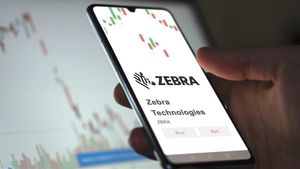Vizient, Inc. released its latest edition of Tech Watch, examining trends in diagnostic imaging (DI), advances in computed tomography (CT) and positron emission tomography (PET) exams and a service line strategy for the use of theranostics to treat cancer. Access Diagnostic Imaging Tech Watch.
“As technology evolves, it’s important to keep up with the latest iterations of diagnostic imaging to strategize patient care and capital asset management,” said Adam Fairbourn, director, contract services, Vizient. “This issue of Tech Watch assesses recent technological advancements, theranostics as a cancer treatment option in the DI space and a look at 10 considerations when thinking about the patient care strategies for diagnostic imaging service lines.”
Featured articles include:
Top 10 trends in diagnostic imaging — Sg2, a Vizient company, forecasts double-digit growth in diagnostic imaging services over the next decade driven by increased demand and technological advances. With an expected 15% growth in CT and PET exams, an already strained workforce can leverage artificial intelligence and automation to improve workflow. From enterprise imaging partnerships to cybersecurity, as this article lays out, providers who plan well will be positioned to further advance their imaging offerings.
Computed tomography advancements can reduce patient radiation and increase scan effectiveness — Since first introduced in the 1970s, innovation in CT technology continues to grow with scientists and engineers developing new and more efficient methods to improve image quality, reduce scan times and lessen radiation exposure. Advancements such as spectral imaging and photon-counting detectors (PCD) have improved the capabilities of CT systems and expanded post-processing capabilities. This article assesses an array of current CT technologies, including those that use PCDs; spectral CT, which offers accentuated image enhancement; and CT fractional flow reserve, which has been shown to reduce invasive coronary angiography and overall treatment costs in coronary artery disease.
Considerations for theranostics: Service line strategy, requirements and external constraints — With the advancement of theranostics and other radioactive tracers for the detection and treatment of cancer, some providers view theranostics as a potential new service line adjacent to oncology and imaging services. Theranostics drugs don’t replace other oncology services such as chemotherapy or radiation therapy, but rather, serve as an additional treatment option for patients who don’t respond to those therapies. This article lays out the most important considerations for a service line strategy, including technology and staff requirements, external constraints and most importantly, regulatory requirements for a radioactive material license.
View past editions of Diagnostic Imaging Tech Watch.
About Vizient, Inc.
Vizient, Inc., the nation’s largest member-driven healthcare performance improvement company, serves more than 60% of the nation’s acute care providers, which includes 97% of the nation’s academic medical centers, and more than 25% of the non-acute care market. Vizient provides expertise, analytics and advisory services, as well as a contract portfolio that represents more than $130 billion in annual purchasing volume. Vizient’s solutions and services improve the delivery of high-value care by aligning cost, quality and market performance. Headquartered in Irving, Texas, Vizient has offices throughout the United States. Learn more at www.vizientinc.com.
View source version on businesswire.com: https://www.businesswire.com/news/home/20230525005283/en/
Contacts
Donna Ledbetter
(972) 830-6321
donna.ledbetter@vizientinc.com






